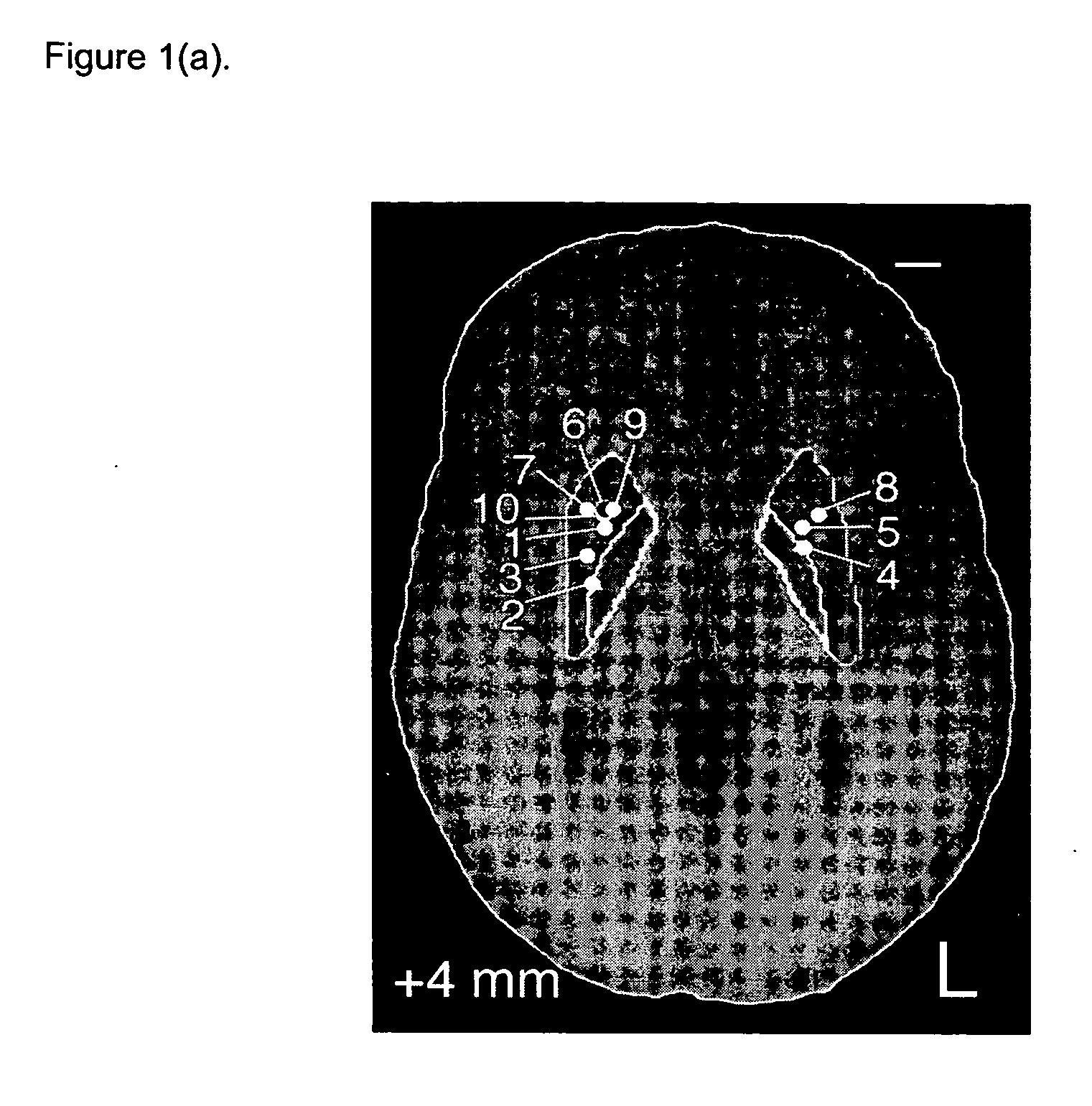Method of treating Parkinson's disease in humans by convection-enhanced infusion of glial cell-line derived neurotrophic factor to the putamen
- Summary
- Abstract
- Description
- Claims
- Application Information
AI Technical Summary
Benefits of technology
Problems solved by technology
Method used
Image
Examples
example 1
Unilateral Intraputamenal GDNF Improves Bilateral Motor Functions in Patients with Parkinson's Disease
Methods
Subjects
[0053] Consent from the patients described in Example 1 was obtained in accordance with the FDA and the local University of Kentucky Medical Center Internal Review Board regulations and guidelines. Patients were diagnosed with idiopathic PD according to standard criteria (Hughes, A. J., et al., What features improve the accuracy of clinical diagnosis in Parkinson's disease: A clinicopathologic study?, Neurology, 42:1142-1146 (1992)). Eight men and two women, aged 47 to 70 years (see Table 2), with moderate to severe idiopathic PD (Hoehn and Yahr Stage 3-4) were selected for the study. Primary symptoms were rigidity and bradykinesia with disease duration ranging from 4.8 to 15.4 years (Table 2). Exclusion criteria included the presence of clinically significant depression or dementia, concomitant disease likely to interfere with the study, prior surgery for PD, dr...
example 2
Treatment of Parkinson's Disease in Humans with Convection-Enhanced Infusion of GDNF into the Putamen
Study Design
[0064] Five patients with idiopathic, L-dopa responsive PD who were poorly controlled on optimal medical therapy were identified. The first patient (P1) had predominantly unilateral disease affecting the left side and underwent contralateral putamenal implantation of catheter and pump for r-metHuGDNF delivery. The remaining patients (P2-5) had bilateral disease and bilateral putamenal implantations of delivery systems. The precise region of the dorsal putamen to be targeted for infusion was determined by co-localization studies using 18F-dopa PET and MR images. Under MRI guidance, single-port catheters were placed into the dorsal putamen, the site of maximal loss of 18F-fluorodopa signal (confirmed by PET in all subjects). Pump placement and stereotactic surgery were tolerated well by all patients. However, there were some complications. PI required perioperative repos...
PUM
| Property | Measurement | Unit |
|---|---|---|
| Flow rate | aaaaa | aaaaa |
Abstract
Description
Claims
Application Information
 Login to View More
Login to View More - R&D
- Intellectual Property
- Life Sciences
- Materials
- Tech Scout
- Unparalleled Data Quality
- Higher Quality Content
- 60% Fewer Hallucinations
Browse by: Latest US Patents, China's latest patents, Technical Efficacy Thesaurus, Application Domain, Technology Topic, Popular Technical Reports.
© 2025 PatSnap. All rights reserved.Legal|Privacy policy|Modern Slavery Act Transparency Statement|Sitemap|About US| Contact US: help@patsnap.com



